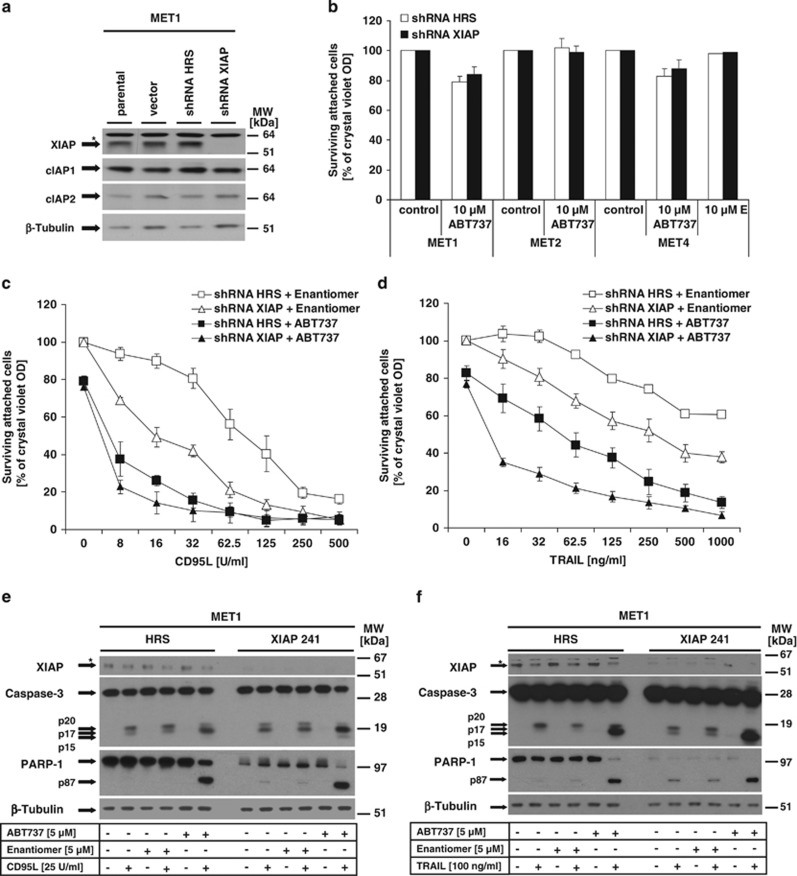Figure 5.
XIAP expression does not explain ABT737 resistance in MET cells, whereas XIAP suppresses TRAIL- or CD95L-induced caspase-3 activation and cell death. (a) Knockdown of XIAP in MET cell was performed as described in the Materials and Methods. Expression of XIAP, cIAP1, cIAP2 and β-tubulin was analysed by western blotting in parental MET 1 cells, or in cells transduced with either XIAP shRNA-containing vector or hyper random sequence (HRS)-shRNA expressing vector. (b–d) Analysis of ABT737-mediated (b), CD95L-induced (c) or TRAIL-induced (d) cell death in control and XIAP knockdown cells was analysed. Transduced MET cells were either stimulated for 18–24 h (b; MET1, MET2, MET4) or prestimulated for 1 h with 10 μM ABT737 or 10 μM Enantiomer (Enan.) followed by stimulation with indicated concentrations of TRAIL or CD95L (MET1) for additional 18–24 h. Cell survival was monitored using crystal violet assay. Summary of three to five independent experiments is shown and S.E.M. was determined. (e and f) Following 1 h of prestimulation with ABT737 (5 μM) or Enantiomer (5 μM), stimulation with CD95L (25 U/ml) (e) or TRAIL (100 ng/ml) (f) alone or in combination with ABT737 or Enantiomer for 3 h was performed. Cleavage of caspase-3 and PARP-1 was analysed in 5 μg of total cellular lysates that were separated with 4–12% NuPAGE gradient gels before detection of indicated proteins, and β-tubulin as loading control, by western blot analysis

